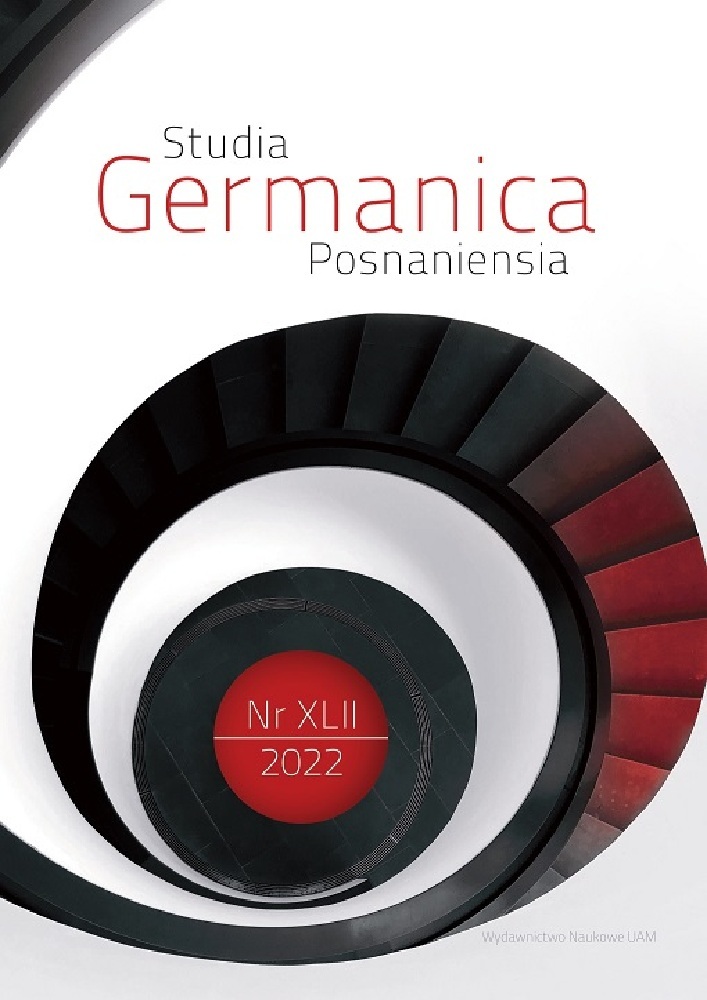Abstrakt
This article will argue the suitability of the Pink Elements (2019) by SUPERFLEX for representing the elementary particles of our posthuman reality, intended from a cultural perspective. Firstly, it will address the ‚bit’, deemed by some as the current arche, revealing its limits in the light of the Niche Construction Theory applied to humans. Then, I will try to demonstrate that the relational dimension corresponds to reality as we perceive it after postmodernity. Therefore, I will analyse the dynamics of the human-environment relationship in the geological era called ‚Anthropocene’ by comparing Merleau-Ponty’s perception and Morton’s hyperobjects. Finally, I will give some examples of recent artworks reflecting this relationship, synthesisable as a ‚recording of a non-deciphered text’, among which the Pink Elements will stand out as bricks capable of representing the ultimate substance of reality as the posthuman culture shows it to us.
Bibliografia
Aristotle. (1933). Metaphysics, Books I-IX (Tredennick H., transl.). London: William Heinemann Ltd. DOI: https://doi.org/10.4159/DLCL.aristotle-metaphysics.1933
Bińczyk, E. (2019). The most unique discussion of the 21st century? The debate on the Anthropocene pictured in seven points. The Anthropocene Review, 6 (1-2), 3-18. DOI: https://doi.org/10.1177/2053019619848215
Bennett, J. (2013). Earthling, Now and Forever?. In F. Ellsworth & J. Kruse (eds.), Making the Geologic Now (244-246). Brooklyn, NY: punctum books.
Bourriaud, N. (2002). Relational Aesthetics (S. Pleasance & F. Woods, transl.). Dijon: Les Presses du réel (Original work published 1998).
Chakrabarty, D. (2018). Anthropocene Time. History and Theory, 57 (1), 5-32. DOI: https://doi.org/10.1111/hith.12044
Cleto, F. (2013), Intrigo internazionale. Milan: il Saggiatore.
Floridi, L. (2014). The Fourth Revolution: How the Infosphere is Reshaping Human Reality. Oxford: Oxford University Press.
GAMeC (2021a). AIR [section of the exhibition Nothing is Lost. Art and Matter in Transformation].
Gamec.it. Retrieved from https://www.gamec.it/wp-content/uploads/2021/11/3.-GAMeC_Nothingis-Lost_Air.pdf.
GAMeC (2021b). eARTH [section of the exhibition Nothing is Lost. Art and Matter in Transformation].
Gamec.it. Retrieved from https://www.gamec.it/wp-content/uploads/2021/11/4.-GAMeC_Nothingis-Lost_Earth.pdf.
Goodman, N. (1968). Languages of Art. An Approach to a Theory of Symbols. Indianapolis: Bobbs-Merrill.
Grazioli, E. (2012). La collezione come forma d’arte. Cremona: Johan & Levi.
Kornhaber, D. (2017). Wes Anderson. Urbana: University of Illinois Press. DOI: https://doi.org/10.5406/j.ctt1t89knr
Laland, K.N. & O’Brien, M.J. (2010). Niche Construction Theory and Archaeology. Journal of Archaeological Method and Theory, 17, 303-322. DOI: https://doi.org/10.1007/s10816-010-9096-6
Laland, K.N., Odling-Smee, J. & Feldman, M.W. (2005). On the Breadth and Significance of Niche Construction: A Reply to Griffiths, Okasha and Sterelny. Biology and Philosophy, 20, 37-55. DOI: https://doi.org/10.1007/s10539-004-6834-8
Longo, G.O. (2020). L’informazione principio primo? Lineamenti di filosofia digitale. In L. Taddio & G. Giacomini (eds.), Filosofia del digitale (27-46). Milan: Mimesis.
Marchesini, R. (2017). Tecnosfera. Proiezioni per un futuro postumano. Rome: Castelvecchi.
Merleau-Ponty, M. (2013). Phenomenology of Perception (D.A. Landes, transl.). London: Routledge (Original work published 1945). DOI: https://doi.org/10.4324/9780203720714
Mesoudi, A. (2008). Foresight in cultural evolution. Biology and Philosophy, 23, 243-255. DOI: https://doi.org/10.1007/s10539-007-9097-3
Morton, T. (2013). Hyperobjects. Philosophy and Ecology after the End of the World. Minneapolis (MN): University of Minnesota Press.
Nancy, J.-L. (2000). Being Singular Plural (R.D. Richardson & A.E. O’Byrne, transl.). Stanford (CA): Stanford University Press (Original work published 1996). DOI: https://doi.org/10.1515/9781503619005
Olafur, E. (n.d.). Beyond human time, 2020 [exhibition title]. Olafureliasson.net. Retrieved from https://olafureliasson.net/archive/artwork/WEK110938/beyond-human-time#slideshow.
Ortoleva, P. (2012). Dal sesso al gioco. Un’ossessione per il XXI secolo?. Espress Edizioni: Torino.
Severino, E. (2009). Il destino della tecnica. Milan: Rizzoli (Original work published 1988).
SUPERFLEX (2019). Pink Elements. Superflex.net. Retrieved from https://superflex.net/works/pink_elements.
Wamberg, J. & Rosendahl T. (2016). The Posthuman in the Anthropocene: A Look through the Aesthetic Field, European Review, 25 (1), 150-165. DOI: https://doi.org/10.1017/S1062798716000405
Licencja
Prawa autorskie (c) 2022 Marco Innocenti

Utwór dostępny jest na licencji Creative Commons Uznanie autorstwa – Bez utworów zależnych 4.0 Międzynarodowe.
